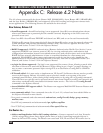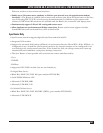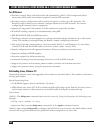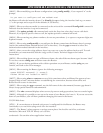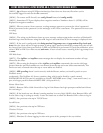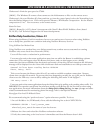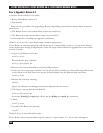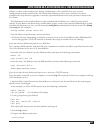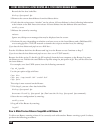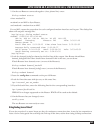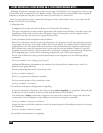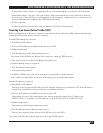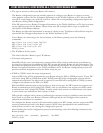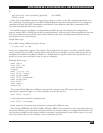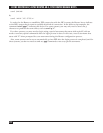
ASYNC ROUTER AR-P, ASYNC ROUTER AR-5, SYNC ROUTER RELEASE NOTES
272
• The type of system to which your Router will connect.
The Router configuration process includes options to configure your Router to connect to some
other popular routers, like the Livingston Portmaster or the Telebit Netblazer or PN. Ask your ISP if
you will be connecting to any of those, and if so, choose the corresponding configuration option for
your Router during initial configuration.
If the ISP system is not a Router, Livingston Portmaster or the Telebit Netblazer or PN, then you must
create a dialing script for the Router. Obtain from your ISP a sample dialer script, or modify the
other.dcf file on the Router diskette.
The Router provides this information by means of a dialer script. The Router will build the script for
systems like the Livingston Portmaster or the Telebit Netblazer or PN.
If your Router is connecting to an Ascend system, at the Router prompt, issue the following
commands:
ppp iface lcp local accm 0xa0000
ppp iface lcp local acfc off
ppp iface lcp local pfc off
config save
• The IP address of that system
This often called the “Router’s peer” IP address.
• Username and password
Most ISPs will give you a username and a password that will be used to authenticate your Router at
the time the connection is established. Your ISP’s system will ask the Router for this information. The
username and password must be in the dialer script used by the Router. If you choose to connect to a
Router, Livingston Portmaster or the Telebit Netblazer or PN, the Router configuration process will
put the username and password into the dialer script for you.
• If PAP or CHAP is used, the name and password
Ask your ISP if they will be authenticating your Router using the PAP or CHAP protocols. If your ISP
will not be using PAP or CHAP, then answer NONE when the initial configuration process asks for
authentication method. No other work is required. If your ISP will be using PAP or CHAP, you must
configure your Router to use PAP (or CHAP).
PAP and CHAP authentication works in either or both of two ways: the ISP’s system can request your
Router to authenticate itself (using PAP/CHAP), and/or your Router can request your ISP’s system
to authenticate itself (using PAP/CHAP). In other words, their system can authenticate your system,
or your system can authenticate their system, or both.
ISPs typically configure their systems to authenticate customers trying to establish connections with
them (such as you with your Router). However, ISPs typically do not configure their systems to
authenticate themselves to customers.
To configure the Router so that it will authenticate itself to the ISP’s system, and not require the ISP’s
system to authenticate itself to the Router, answer NONE when prompted for the authentication
method that you wish to use, during the configuration process.
After finishing the initial configuration process and rebooting, enter the following command at the
Router prompt:
ppp iface pap user [username] [password] (for PAP)
config save



